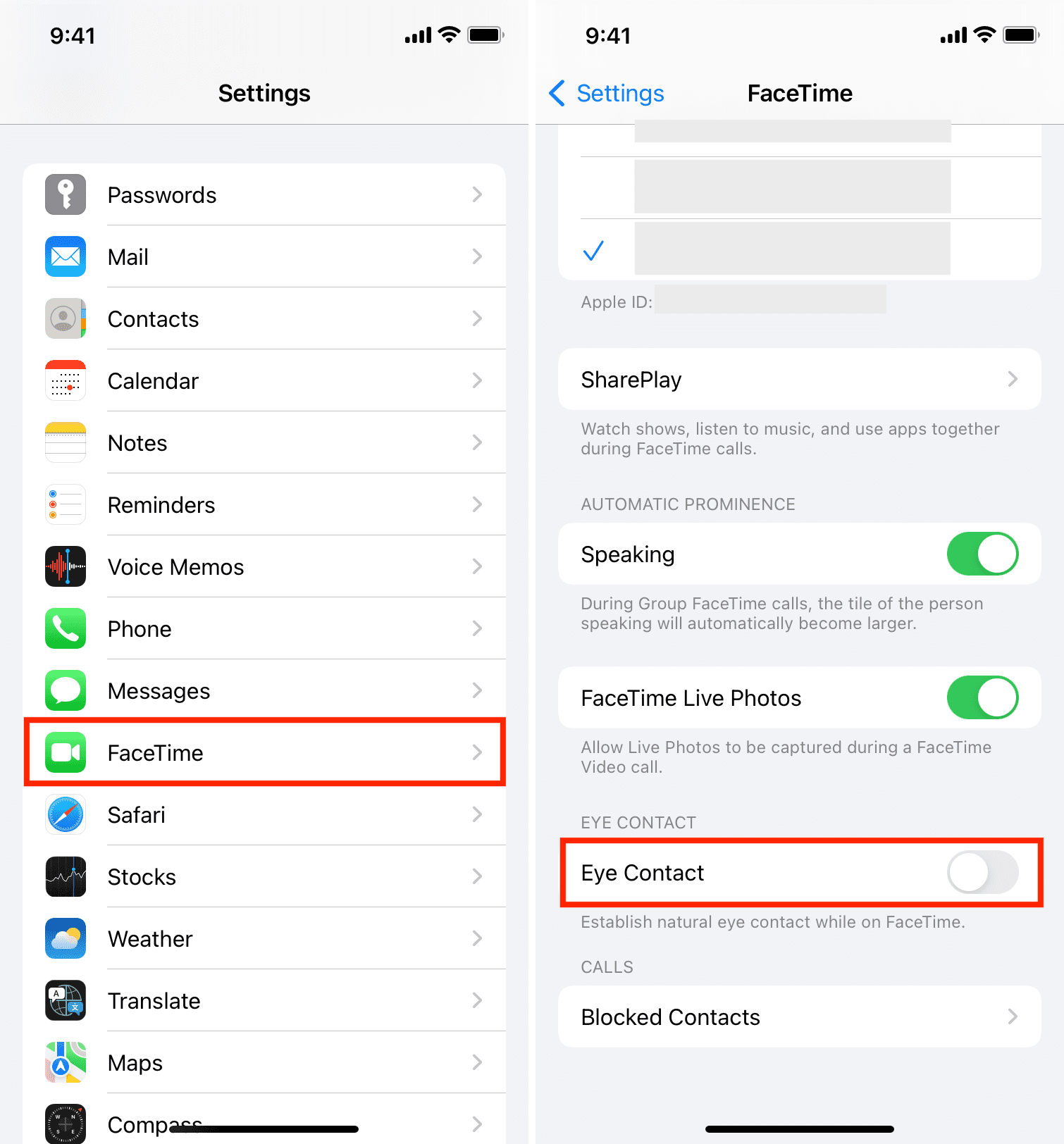A cool FaceTime eye contact correction feature helps you establish eye contact even when you’re looking at the screen instead of the camera. If you find this feature a bit unsettling, follow along with our tutorial that will walk you through the steps to disable it entirely.

About FaceTime eye contact
It’s not like people intentionally avoid eye contact in video calls — that’s simply a product of the front-facing camera sitting just above the top edge of the iPhone display. Now, most of us are inclined to stare at the device screen rather than the front-facing camera because it’s in human nature to be looking at the person you’re video-chatting with in order to see their reactions.

FaceTime makes it appear as if both participants were staring directly at the front-facing camera when they’re normally peering off to one side of the screen or the other. To solve this long-standing problem of appearing to be looking away from the recipient or staring at their chin or mouth, Apple is using a combination of augmented reality and advanced computer vision techniques to adjust the user’s eyes accordingly, in real-time.
“FaceTime can make video calling more natural by helping you establish eye contact even when you’re looking at the screen instead of the camera,” reads Apple’s description. The Cupertino tech giant first tested the feature during iOS 13’s development. Apple referred to it as Attention Correction, but the company ditched it prior to its final release without explanation.
With iOS 14, the feature was re-introduced and brought to the masses.
FaceTime eye contact correction requirements
Because this cool feature takes advantage of the system’s ARKit 3 framework for augmented reality apps, it’s supported on the following iPhone models:
- iPhone XS and later
- iPhone XR
FaceTime’s eye contact correction is, however, unavailable on the iPad and Mac at this time.

While I can concur being able to use it on my iPhone XS Max, try as I might, I couldn’t for the life of me locate it on my iPad mini 5 even though Apple’s A12 Bionic chip powers both devices. Eye contact correction for FaceTime is currently missing from the Mac, too.
Video calling with or without eye contact?
Although realistic eye contact between call participants definitely improves the intimacy of your FaceTime Video calls, some people might prefer to disable the feature altogether due to the slight video artifacts such as the (barely) noticeable warping of the line across the eyes and nose (which may become significantly more pronounced when wearing glasses).

The side-effect of eye contact correction was noted on Twitter by Dave Schukin, who tweeted out a short animation showing how the software appeared to warp the eye area slightly. Following up with another tweet, he demonstrated that a similar effect appears while wearing sunglasses, too, which he says is understandable given an ARKit-based implementation.
Sunglasses also experience similar warping in the eye regions, which is exactly what you’d expect from a simple ARKit-based implementation. pic.twitter.com/rMmNoDCMSQ
— Dave Schukin 🇺🇦 (@schukin) July 3, 2019
How to disable FaceTime eye contact correction
FaceTime’s eye contact correction is enabled by default on the iPhone, provided your handset supports it in the first place. Do you find this useful feature spooky or a bit disconcerting?
Follow these steps to turn off FaceTime eye contact correction:
- Open the Settings app on your iPhone.
- Choose FaceTime.
- Turn off Eye Contact.

Doing so shall disable FaceTime’s eye contact correction.
Conversely, leave the feature enabled if you prefer to establish natural (albeit simulated) and direct eye contact during FaceTime Video calls.
FaceTime tips: